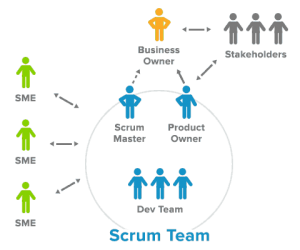Don’t focus all your marketing efforts on external customers and stakeholders. Columnist Scott Vaughan explains how stepping up your internal communications will boost your marketing results.

Marketing is arguably the profession going through the biggest transformation, with the most potential to boost a company’s revenue growth. The ability to delight, engage, create and build customer loyalty through great experiences and superior products has never been so accessible as it is today.
While marketing teams rightly focus heavily on external customers and stakeholders, we’re missing an important audience in our mission; we must extend our focus to educating, inspiring and showcasing our work to key internal stakeholders.
Finance, sales, business/partner development, IT, HR, customer service and the employee base in general are an invaluable part of the marketing effort today. These groups can carry the message directly to customers and prospects, fund critical initiatives to increase your impact, find the right talent to make a difference, apply technology to improve your effectiveness, and make recommendations to customers to get them more deeply invested.
Ironically, marketing is notoriously bad at internal communications and collaboration. The storytelling component is often absent, and the data shared is sporadic. Neglecting to dedicate necessary time to involve other departments in marketing’s efforts greatly limits a company’s collective ability to delight customers and grow revenue.
It’s time to get to work dedicating a reasonable amount of time and energy involving the many resources available across your organization. Yeah, yeah I get it. Our days, weeks and months are already fully consumed. This is a classic trade-off: take a half-step back to take two steps forward. Here are a few ways to make it happen internally and get important company resources behind you.
Use research & data to share your vision and strategy
We all know how valuable data can be, especially in marketing. Our use of data starts with acquiring and analyzing it to shape our vision and go-to-market strategies. Using data that captures things like TAM (total available market), or customer research that amplifies the market opportunity, is critical in amplifying the “why” and guiding our business growth opportunities.
A useful step in the data process is getting your finance or product colleagues, for example, to help you with the research and participate in making the business case. There’s nothing like “skin in the game.” Not only will they take on accountability, they’ll be more apt to provide the resources required to execute the vision.
Bring market opportunities & challenges to life via storytelling
Data is required, but it will have little impact without delivering a story that your colleagues can understand and get behind. Our internal effort should bring to life the opportunity, the need, the threat or the gap that needs to be addressed.
By painting an eloquent picture of “current state challenges,” “pending threats” or “potential opportunities,” you’re illustrating what happens if you make this move — and, just as importantly, what happens if you don’t. Just like you’re preparing for an external marketing program, use straightforward communications with data and lay it out in a story format that your audience can follow and participate in.
One of the best examples I’ve recently witnessed was executed by one of our customers. The marketing team had all the data on why investing in a marketing tech solution would create bottom-line efficiency, while also delivering improved sales pipeline results. The marketing exec and team presented a business case with hardcore data, but a separate decision-making team in the organization wasn’t buying it.
So, the customer brought to life what would happen if the right tools aren’t in place. In this case, the prospect lead data was left ungoverned, and manual routing was delayed by several days in getting leads to sales. They felt the pain of not having the tools in place. No surprise — it didn’t take but a few weeks to get all on board.
Involve stakeholders in setting metrics & showcase the results
One of the best ways to get continuous or additional internal support required to help you execute your next big initiative is to dedicate some time to not just sharing results — awesome, average and even atrocious — but involving the key stakeholders in jointly setting the target KPIs and metrics. This means locking arms early in the process with peers who can help you move the needle. If they help set the target KPIs, there is ownership in helping you and your team hit them.
The other learning here in the internal communications process is to be direct, open and honest about what’s working and what’s not. If your effort isn’t driving the expected results, get the data out there as rapidly as possible to share and ask for help. Executives hate surprises.
If the results are crushing your target, share the news and give credit to all involved. It only gets them more on board to be part of the initiative. This effort to share the results could require a simple meeting or two, or it may take a “tour,” much like that marketing road show you have in the works.
Drink your own champagne to build internal credibility & support
Your internal communications efforts will help you improve your marketing results if applied diligently and consistently. In fact, this is the ultimate case of “drinking your own champagne.” (You may prefer the old-school “eat your own dog food.”)
Marketers’ trademark is storytelling, engaging audiences and getting them to act. There’s no time like right now to start applying those mad marketing skills — internally, as well as you do externally.
Some opinions expressed in this article may be those of a guest author and not necessarily Marketing Land. Staff authors are listed here.
Marketing Land – Internet Marketing News, Strategies & Tips
(22)
Report Post







